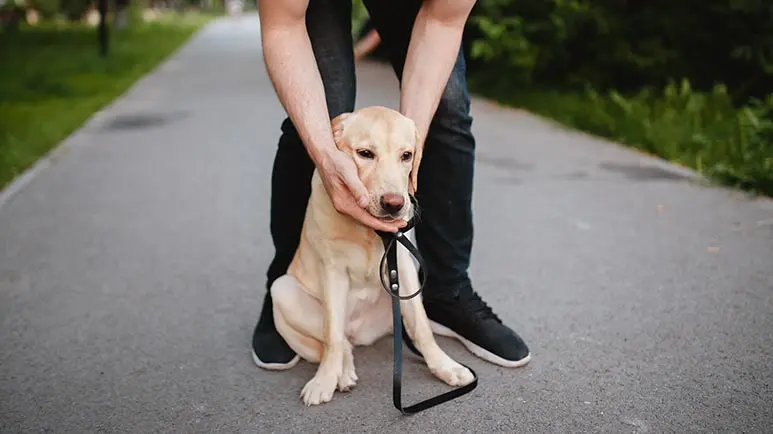Avoid Tragedy: The Heimlich Maneuver Could Save Your Pet’s Life
This can happen to pets, especially dogs, just like it does to humans. And the emergency hands-on treatment is pretty much the same, with minor variations for big and small dogs and cats. Everything you need to know is right here.

STORY AT-A-GLANCE
- Pets, especially dogs, occasionally choke on things just as humans do
- Knowing how to respond appropriately to a choking emergency can save your pet’s life
- It’s important to remain calm in any pet emergency to prevent increasing your dog’s or cat’s stress level
Editor's Note: This article is a reprint. It was originally published November 14, 2015.
Just like humans, pets (typically dogs) occasionally choke on things. Fortunately, it's uncommon for an animal to choke, especially to the point of unconsciousness, but if your pet ever does, knowing how to perform the Heimlich maneuver could save his life.
Signs and Causes of Choking in Pets
It can sometimes be difficult to tell whether a dog is choking or just coughing. However, a choking dog will have trouble inhaling, whereas a dog who is just coughing will breathe relatively normally.
If your dog is choking, she's suffocating, and she will get panicky. Also watch for pawing at the mouth.
The most common cause of choking in pets is ingestion of an object that lodges in the airway, including things like hard rubber balls, meat gristle, and chew sticks that swell when they become moist.
Heimlich Maneuver in 9 Steps
- Open your pet's mouth and check for a foreign object. If you can see something in his mouth or throat, try to remove it with your fingers, or grip his tongue and pull it toward you to try to dislodge the object.
Alternatively, move your finger around inside your dog's mouth to try to feel and dislodge any foreign object. (There is obviously a risk of being bitten, so take appropriate precautions anytime you put your fingers in your pet's mouth.) - If you have no luck dislodging the object by manually removing it, pick your dog up and place his back against your chest. Put both hands under his waist area behind the ribs. Make a fist with your hands, place them behind the last rib, and rapidly push up and in 5 times.
- If your dog is too heavy to lift, stand behind him, place your arms around him under the rib cage, make a fist with both hands, and pull in and upward rapidly 5 times.
- If your dog is unconscious and too heavy to lift, lay him on his right side. Kneel beside him with his legs pointing toward you. Place one hand on the other and place the palm of the bottom hand right behind his ribs. Push in and up 5 times rapidly.
- Open your dog's mouth again and look for any foreign object dislodged during the abdominal thrusts you just performed. Move your finger around in his mouth to dislodge and remove the object.
- If the object still hasn't been dislodged, with your dog on the ground, put your hands in front of his hips, then lift and suspend him with his head toward the floor.
- If he's too heavy to lift, lift his back feet, until his head is lower than his hips.
- Recheck your pet's mouth and use your finger to feel for the object and remove it.
- If this doesn't work, put your dog in a sitting or standing position and use the palm of your hand to deliver 5 sharp blows to his back between the shoulder blades.
- Open your dog's mouth to check again for a foreign object. You might want to use a small flashlight to get a better look inside. Use your fingers to try to find and clear the object.
- Until the object is dislodged, continue to repeat the above steps.
- If your dog loses consciousness, give him 5 breaths followed by 5 abdominal thrusts and continue these 2 steps (breaths and thrusts) until the object is dislodged.
As soon as the object is dislodged, check your dog's airway, breathing, and heart rate. Perform CPR if necessary and get your dog to your veterinarian or an emergency animal hospital immediately.
Keeping Your Cool in a Pet Choking Emergency
During a pet emergency it's very important to remain calm. Your animal companion can sense your fear, which will raise his stress level and decrease the chance for a good outcome.
In the event of any crisis involving your pet, I recommend you call your veterinarian or a local emergency animal hospital right away (or an animal poison hotline if you think your dog or cat has ingested a poison). However, if the situation is immediately life-threatening, such as a choking incident, taking matters into your own hands may be necessary to save your pet.
Sources and References
- Pet Place September 23, 2014











